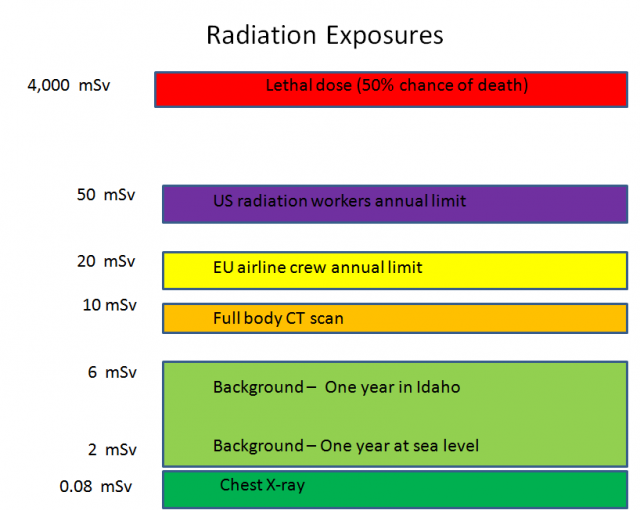Category: Featured
High level of iodine 131 in seawater near N-plant
A high level of radioactive iodine has been detected in seawater near Japan’s troubled Fukushima Daiichi nuclear power plant. The facility was hit by the March 11th earthquake and tsunami. Link to NHK WORLD TV – an English language 24-hour international news and information channel. News script available here.
Stricken nuclear plant’s No.3 reactor ‘may have cracked’ as Fukushima Fifty workers are treated for radiation contamination
Read more: http://www.dailymail.co.uk/news/article-1369822/Japan-nuclear-crisis-3-Fukushima-Fifty-exposed-radiation-taken-hospital.html
UPDATES:
 Fukushima Live Webcam
Fukushima Live Webcam
http://www.woweather.com/weather/news/fukushima?LANG=us&VAR=webcam&SAT=201103260800
Live NHK Japan News and Video link (English)
http://www3.nhk.or.jp/nhkworld/
Japan Radioactivity Map
http://www.mapion.co.jp/topics/genpatu/
MEXT – Ministry of Education Culture, Sports, Science and Technology Japan
http://www.mext.go.jp/english/radioactivity_level/detail/1303962.htm
NISA – Nuclear and Industrial Safety Agency
http://www.nisa.meti.go.jp/english/index.html
Japan Atomic Industrial Forum
http://www.jaif.or.jp/english/
EPA – US Environmental Protection Agency
http://www.epa.gov/radiation/
Online Geiger Counter Nuclear Radiation Detector Map
http://www.blackcatsystems.com/RadMap/map.html
Nuclear Power Plants Around the World
http://www.nucleartourist.com/
Finland Radiation Monitoring – Finnish Radiation and Nuclear Safety Authority
http://www.stuk.fi/index_en.html
Dutch Radiation Monitoring
http://www.rivm.nl/milieuportaal/dossier/meetnetten/radioactiviteit/resultaten/
Swiss Radiation Monitoring
https://www.naz.ch/en/aktuell/zeitverlaeufe.html
IRSN
http://www.irsn.fr/EN/Pages/home.aspx
Europe Radioactivity Maps
http://eurdeppub.jrc.it/eurdeppub/home.aspx#
Europe Radioactivity Maps
http://strahlenbelastung.wo-wann-wer.de/
Northern Hemisphere Cryosphere Conditions
http://arctic.atmos.uiuc.edu/CT/animate.arctic.color.0.html
Northwest Pacific Infrared Loop
http://www.srh.noaa.gov/srh/tropicalwx/satpix/nwpac_ir4_loop.php
Weather Model – Global Jet Stream Wind and 250 mb Pressure
http://www.stormsurfing.com/cgi/display_alt.cgi?a=glob_250
NOAA
http://nowcoast.noaa.gov/
Jet Stream Analyses and Forecasts
http://squall.sfsu.edu/crws/jetstream.html
Realtime radiation data collected via the System for Prediction of Environment Emergency Dose Information (SPEEDI)
http://www.bousai.ne.jp/eng/
Telascience Map Visualization – twenty-three values from two hundred+ stations, every ten minutes, including: radiation level, wind speed, wind direction and precipitation
http://hyperquad.telascience.org/jp_earthquake/
http://telascience.org/
RDTN created this site to display the reliable data readings as they become available
http://www.rdtn.org/
The best information and links are being consolidated right here on
https://geigercounter.com
Radiation is energy that comes from a source and travels through space and may be able to penetrate various materials. Light, radio, and microwaves are types of radiation that are called nonionizing. The kind of radiation discussed in this document is called ionizing radiation because it can produce charged particles (ions) in matter.
Ionizing radiation is produced by unstable atoms. Unstable atoms differ from stable atoms because unstable atoms have an excess of energy or mass or both. Radiation can also be produced by high-voltage devices (e.g., x-ray machines).
Unstable atoms are said to be radioactive. In order to reach stability, these atoms give off, or emit, the excess energy or mass. These emissions are called radiation. The kinds of radiation are electromagnetic (like light that can be seen using various density filter options for electromagnetic radiation sensor equipment) and particulate (i.e., mass given off with the energy of motion). Gamma radiation and x rays are examples of electromagnetic radiation. Gamma radiation originates in the nucleus while x rays come from the electronic part of the atom. Beta and alpha radiation are examples of particulate radiation.
Interestingly, there is a “background” of natural radiation everywhere in our environment. It comes from space (i.e., cosmic rays) and from naturally occurring radioactive materials contained in the earth and in living things. More from Health Physics Society http://www.hps.org/publicinformation/ate/faqs/radiation.html
Comments closed

